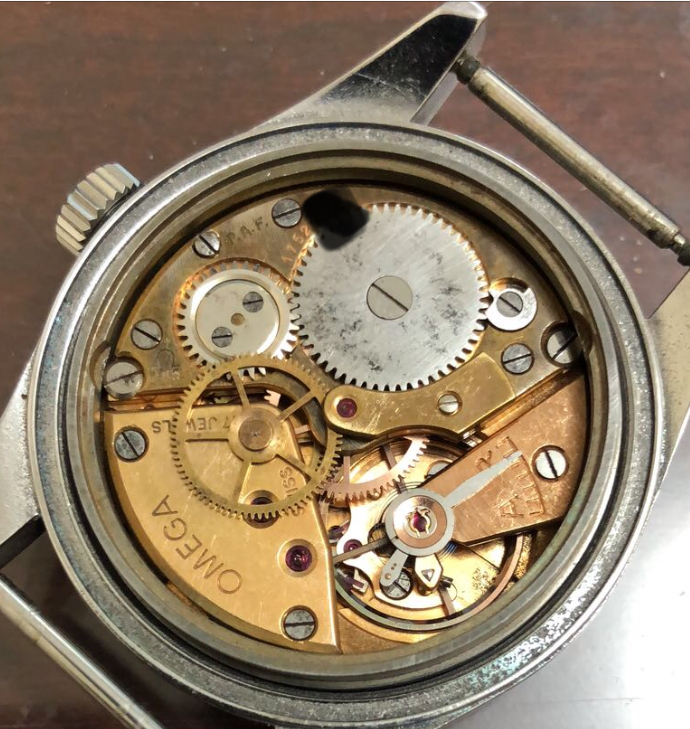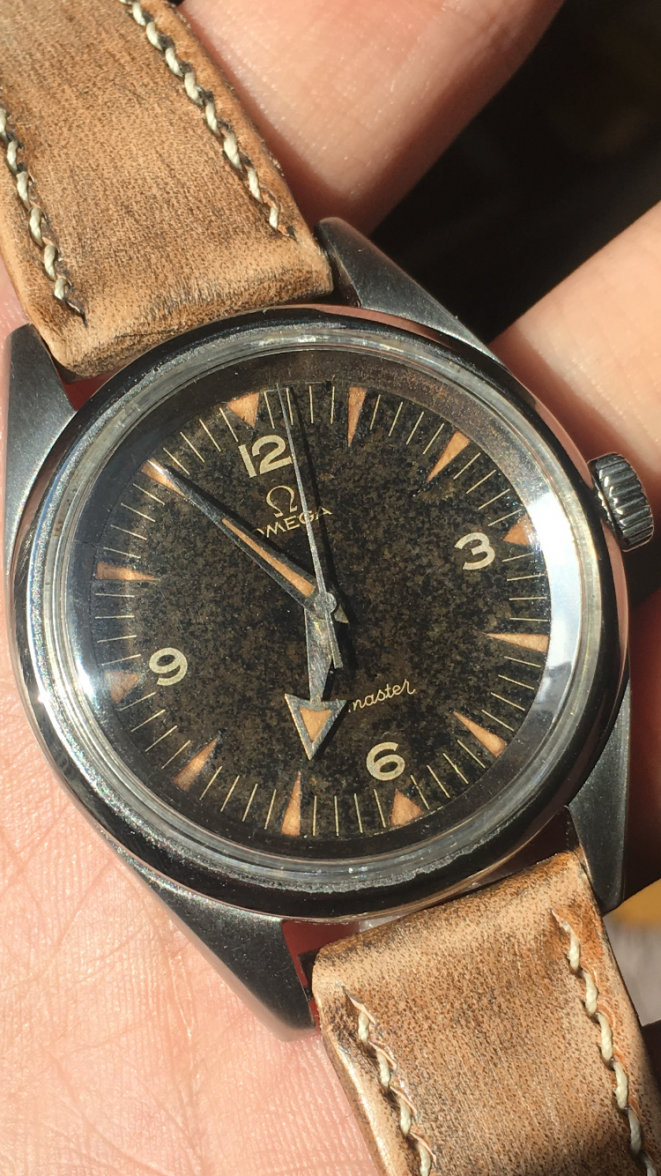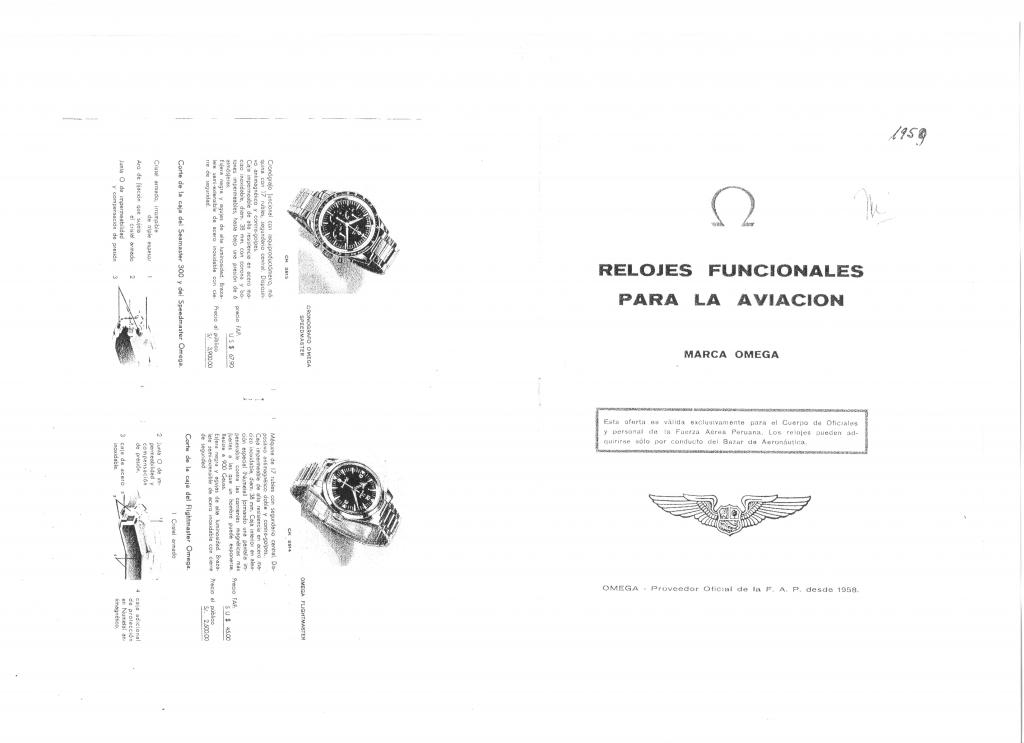Railmaster 2914-5 PAF -- but.....
Tony C.
··Ωf Jury memberHi OF, I am the owner of the PAF rm and I suggest Joel to open this thread. I am not even talking with the trade deal now as it is quite obvious now that we will not move on but now I am more interested to understand and confirm what the issue are ( I will.keep it as a beater btw ).. The idea was to answer some questions we had after we discovered the issue above. As a fool, I only rely on white light lume test and visual inspection when I got this watch. As Joel state, dial and hands really behave like old radium / tritium after white light exposure but the UV lamp test and the geiger count clearly show it is not. So can we all agree that the dial and hands were relumed? Or is there any other people having seen some dead radium / tritium behaving like this in the past? (Just asking..).
This is an issue that I have recently dealt with, and it's a thorny one.
I had a chronograph from the late '40s/early '50s, so there was no question about the original lume having been radium. Under UV light, both hands and markers behaved exactly as one would expect from radium, and the decay was also consistent (i.e. very fast). However, using a geiger counter app on a friend's smartphone, it barely moved the needle. There were other watches tested at the time, and some tested strongly, so the counter seemed to be functioning. Oddly, one that was tested by the same brand as my chrono also tested weakly.
As both dials appeared to be original (hard to imagine that they were redials), it occurred to my friend and I that there were undoubtedly different amounts of radium used by different factories, and the formulas were also variable. So, my very unscientific and tiny sample take-away from this experience was that even high-tech detection results may not necessarily be 100% dispositive when it comes to very old radium.
Given that the watch being discussed on this thread is less old, I would be more wary of originality.
Finally, different coloured bridges are an automatic red flag for me.
flame
·Hi
I think the difference here is something that might normally raise a ' red flag ' is considered much more acceptable due to the very nature of what makes the Watch desirable....its history & use as a tool whilst issued to PAF.
Mick's ( @Micheal e ) comments make perfect sense to me & his experience in handling Watches of this type valuable input.
Best - Neil
I think the difference here is something that might normally raise a ' red flag ' is considered much more acceptable due to the very nature of what makes the Watch desirable....its history & use as a tool whilst issued to PAF.
Mick's ( @Micheal e ) comments make perfect sense to me & his experience in handling Watches of this type valuable input.
Best - Neil
Tony C.
··Ωf Jury memberYes, Neil, it is true that military watches were true tool watches, and replacing parts for practical reasons is fully understandable. Military watch collectors tend to be much more forgiving about such things, including re-lume, as well.
My red-flag comment was simply about the likelihood of originality, though.
My red-flag comment was simply about the likelihood of originality, though.
neilfrancis
·Amazing, wonderful thread. Open, honest, educational. Thanks to all participants, especially OP and @Fost
(End of interruption.) 🍿
(End of interruption.) 🍿
NT931
·Amazing, wonderful thread. Open, honest, educational. Thanks to all participants, especially OP and @Fost
(End of interruption.) 🍿
Fost
·oddboy
·So one of the key things we are curious about is the lume.
I think we have determined that the watch watch was relumed, but with what? It looks like tritium, but doesn't glow under uv. Should it?
I for one would love some feedback about this key point..
I think we have determined that the watch watch was relumed, but with what? It looks like tritium, but doesn't glow under uv. Should it?
I for one would love some feedback about this key point..
MaiLollo
·I have seen this watch 2/3 times in the flesh, and I would have never thought that it had been relumed. I'm like John Snow when it comes to PAF Railmasters, but I know Heuer Bunds a bit and a lot of them are not original anymore because Bund watchmakers replaced often a lot of parts in order to make the watches reliable.
I would say that this watch's value is purely down to the condition of other PAF Rails: is this one worth having, and if so, at what price ?
I would say that this watch's value is purely down to the condition of other PAF Rails: is this one worth having, and if so, at what price ?
t_swiss_t
·FWIW I have some nos 1960’s Rolex parts that definitely have original lume but don’t respond to UV. Don’t think I’ve seen that with Omega though (yet.)
IMO the late 60's Rolex tritium mixture (around '68 and beyond) is the only type that doesn't respond to UV. As far as I've seen all of the earlier lume mixtures do, both radium and tritium.
t_swiss_t
·It looks like tritium, but doesn't glow under uv. Should it?
I for one would love some feedback about this key point..
If it was radium it would definitely light up on the geiger so that is ruled out. Different luminescent compounds mixed with tritium provide the 'reaction' to UV, so it's likely that if it doesn't glow it is one of those compounds. I don't know the nature of the different mixtures off hand but it's likely similar to the late 60's and 70's Rolexes that are tritium but have no UV response.
oddboy
·If it was radium it would definitely light up on the geiger so that is ruled out. Different luminescent compounds mixed with tritium provide the 'reaction' to UV, so it's likely that if it doesn't glow it is one of those compounds. I don't know the nature of the different mixtures off hand but it's likely similar to the late 60's and 70's Rolexes that are tritium but have no UV response.
Fost
·i love this thread... i only wish we were not talking about my watch 😁
t_swiss_t
·interesting. so it is possible it's tritium even though it doesn't light up under UV? Is there any way to tell definitively (yeah, i know... probably not.)
Yes, definitely possible. Here's are a few threads I had marked from Rolex Forums on the subject.
https://www.rolexforums.com/showthread.php?t=123465
https://www.rolexforums.com/showthread.php?t=31836&highlight=tritium gieger
Neither helps with the second question but, even if the half-life of tritium is shorter than the age of the watch, it should still have some low level Geiger reading as the half-life only corresponds to a 1/2 loss of the degrading tritium. I can't tell you what a tritium geiger reading should be for a watch of that age but, given the number of great watches you have you can probably compare readings from those to this one.
Fost
·Yes, definitely possible. Here's are a few threads I had marked from Rolex Forums on the subject.
https://www.rolexforums.com/showthread.php?t=123465
https://www.rolexforums.com/showthread.php?t=31836&highlight=tritium gieger
Neither helps with the second question but, even if the half-life of tritium is shorter than the age of the watch, it should still have some low level Geiger reading as the half-life only corresponds to a 1/2 loss of the degrading compound. I can't tell you what a tritium geiger reading should be but, given the number of great watches you have you can probably compare readings from those to this one.
watchyouwant
·if you relume with water based tritium and cover the plots after that with dried and re watered black tea residue, you get exactly this result. the whole radium geiger discussion has a place with collectors, but you still get access to radium based medical stuff to mimic the geiger readings. Russia and China still have radium base paste. if you really want to fool anybody, that is the way to go. expensive rolex watch collectors know that. Geiger readings are just one facett in evaluating vintage watches. you have to handle a lot of watches to become more certain, what you are looking at. in this case the different colour movement plates would kill it for me. the chances of tampering are too high. i had many PAF railmasters and we contributed to the evaluations of the factory research regarding the PAF watches with John Diethelm in the 90`s. still, i`d not trade with this Speedmaster , as requested with the OP. only with the much rarer FAP Flightmaster. not the more common PAF examples. kind regards. achim
t_swiss_t
·If the tritium is diluted during the relumed, can this affect the geiger count? I am.asking because the glowing is very low after white light exposure and this make me think it could be low concentration tritium... Or something else
I would assume so but that is just pure assumption. I guess it would have to depend on if there was tritium presented in whatever it was mixed with. Reminds me of the excellent 2913 with relumed hands that @ndgal has FS here (https://omegaforums.net/threads/195...13-3-7077-6-bracelet-2-original-bezels.73241/), no?
kov
·My personal rule is that the luminous material is supposed to glow under UV. A dial or hands not glowing under UV will be automatically excluded from my potential purchases.
Fost
·if you relume with water based tritium and cover the plots after that with dried and re watered black tea residue, you get exactly this result. the whole radium geiger discussion has a place with collectors, but you still get access to radium based medical stuff to mimic the geiger readings. Russia and China still have radium base paste. if you really want to fool anybody, that is the way to go. expensive rolex watch collectors know that. Geiger readings are just one facett in evaluating vintage watches. you have to handle a lot of watches to become more certain, what you are looking at. in this case the different colour movement plates would kill it for me. the chances of tampering are too high. i had many PAF railmasters and we contributed to the evaluations of the factory research regarding the PAF watches with John Diethelm in the 90`s. still, i`d not trade with this Speedmaster , as requested with the OP. only with the much rarer FAP Flightmaster. not the more common PAF examples. kind regards. achim


